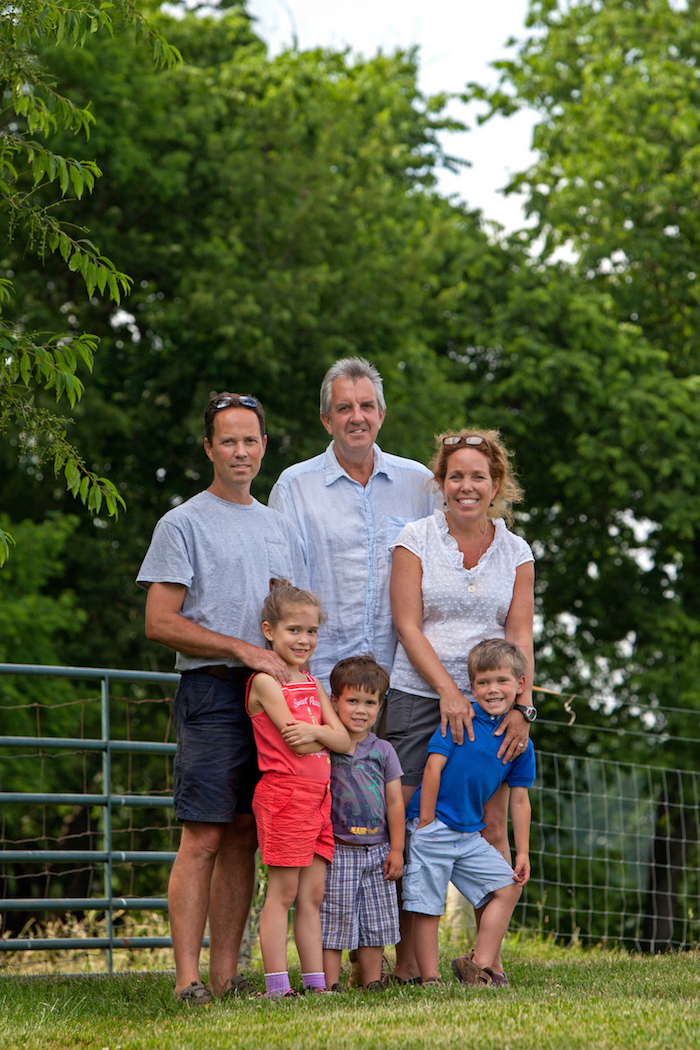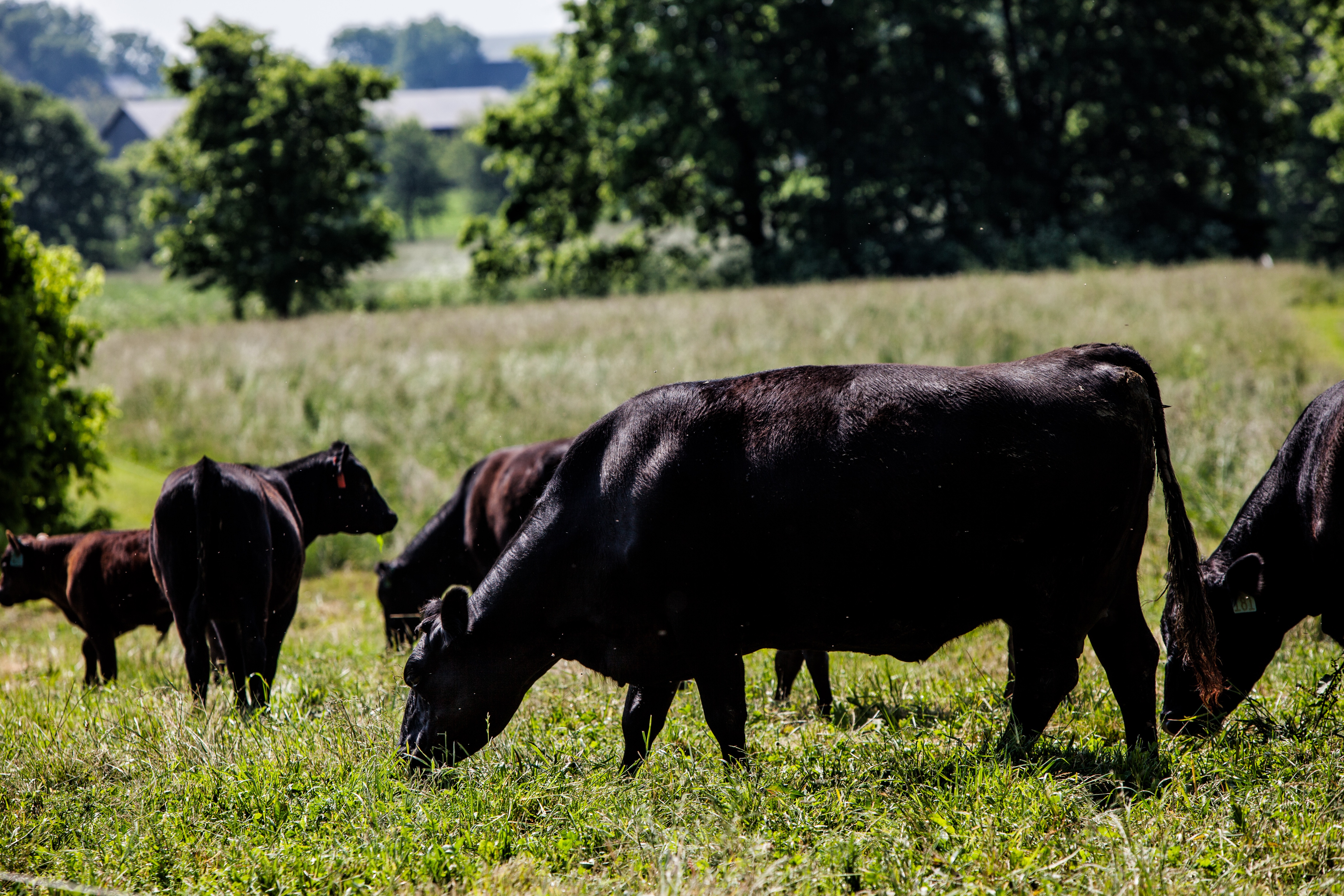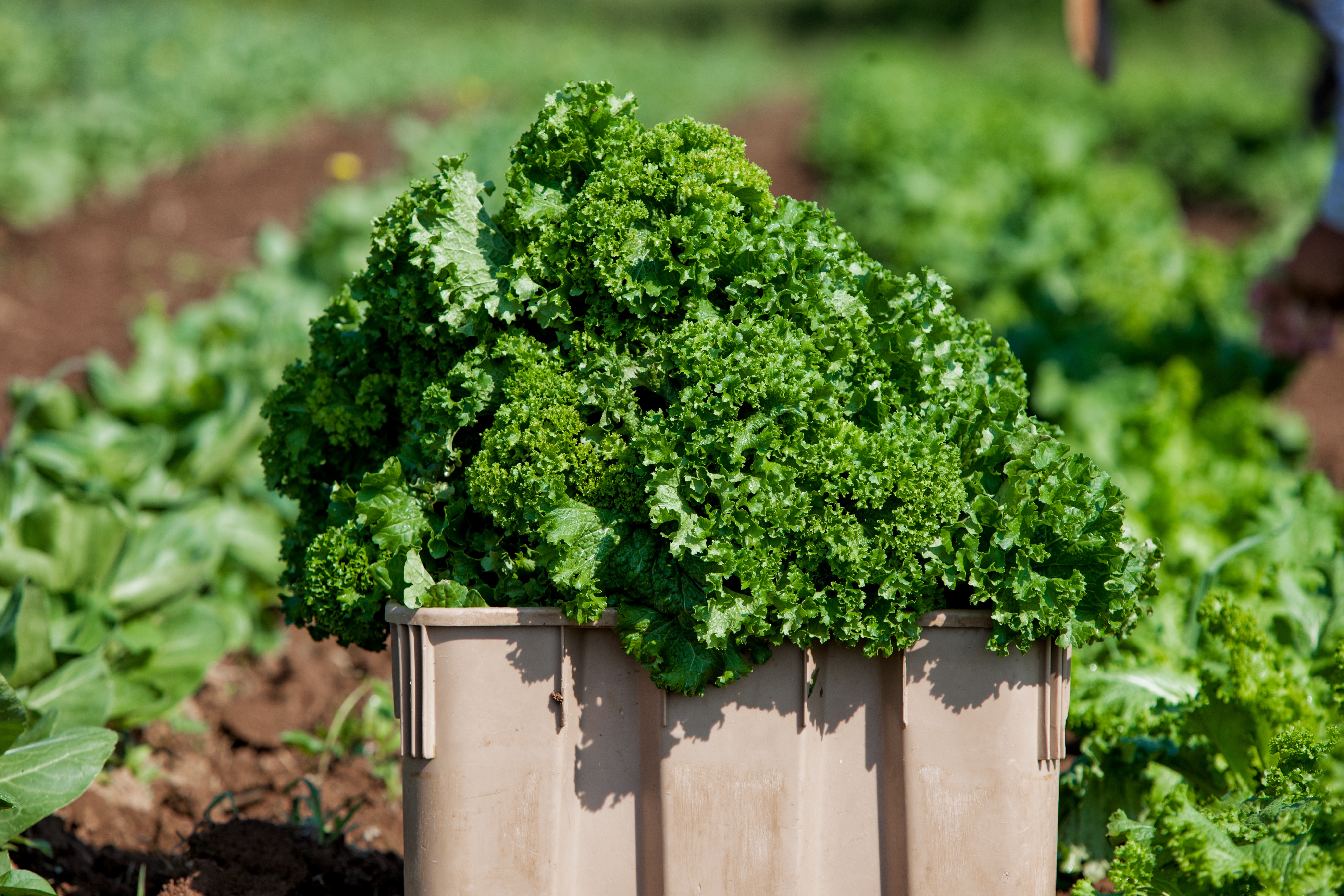By: Mac Stone, Farmer & Owner, Elmwood Stock Farm
Customers at the farmers market have been asking more questions about regenerative agriculture lately. What does it mean? Is it better than sustainable or organic? Maybe this little story will help to frame it for you. According to Webster, to regenerate is to bring into existence again, but that greatly oversimplifies it for my way of thinking.
 Mac Stone (center) with his family and fellow farmers. They invite you to join them on the farm Friday to learn more about regenerative farming.
Mac Stone (center) with his family and fellow farmers. They invite you to join them on the farm Friday to learn more about regenerative farming.My generation greatly benefitted as a product of the Greatest Generation. Our parents collectively stood tall, took it on the chin in Europe and the South Pacific, and did what they had to do to get through life, while rarely belaboring the hardship. They brought all of the wartime technology back home to the hills and hollers of the heartland, and the industrialization of food really began. Ingredients for bombs and other munitions were turned back into fertilizers. Nerve agents were reformulated into pesticides. Tanks turned into tractors and specialized machinery was put onto wheels. Farm boys were looking to get back to work, families sprang up everywhere and the development of TV was not far off.
Now picture two brothers coming home from war in 1940s rural America. One just wants to settle back into the farm by tending the cattle and raising a few crops to sell, grow and eat. He is glad to get back to life as he had known it, put the war behind him, hug on his high school girlfriend and enjoy some home cooking. The orchard needs pruning, the weeds have taken the grain fields, the cows seem somewhat skittish towards him, but overall, the farm is fine, ready and waiting for his work. The old Farmall tractor still runs pretty well and is big enough to turn a good amount of ground and make some hay. While the farm doesn’t look like much, the brother doesn’t really need much, as he is mostly glad to be out of harm’s way and back on the homeplace.
The other brother comes back as well, excited about all the new technology available to raise vast fields of crops. He takes over the neighbor’s land and begins planting. He even takes out a few fences and trees for efficiency sake, as he wants to plant more and more, fence row to fence row eventually. He learns about matching up the right seeds with the right fertilizers with the right herbicides with the right insecticides, and while a little tricky, it makes it all exciting. He grows bigger and buys shiny new farm machinery with help from the local banker and the money floating around. Besides, the Land-Grant University Research Institution is there nearby to help advise him.

The first brother settles down with his girl, makes a map of the farm, does some math, studies up on soils and plants, and plots out a diversified plan to work the farming life and raise a family. They would barter eggs for dry goods and chicken for gasoline. They would butcher a few beeves and scald some hogs several times a year. As the people in town had grown weary of victory gardening, they were glad to have the farmer nearby to provide them with veggies all summer long. He and his wife seed down part of the farm in alfalfa to build soil and sequester carbon. He plants vegetable seeds to provide many in his community with food, and he puts in an orchard for fruit, like apples. He strings up barbed wire so the cattle can help themselves to good pasture a few meals at a time. The brother quickly learns that, by swapping the alfalfa and vegetable fields every few years, both crops do better. He cherishes his relationships with his farm’s customers and the farm is a great place to raise kids.
All the while, the high tech brother concocts a plan to jumpstart his farming enterprise. He accumulates the right gear and gadgets to plant lots of seeds to sell lots of crops in the fall of the year and be finished until the next spring. All that ripping and running tractors with plows, planters and sprayers up and down the roads is impressive for people to see, but he has little interaction with his neighbors or customers. What folks can’t see are the insidious chemical toxins being released all around them. They cannot see that the race to outpace Mother Nature with retooled munitions and nerve agents is escalating. The high tech brother engages in a treadmill-type of production using petroleum-based fertilizers, herbicides, insecticides, fungicides and seeds that must be purchased and applied to the land each season. Ultimately, he grows crops to sell to people he doesn’t know outside of his community.
Eventually, the high tech brother’s methods of farming with big tractors, petrochemicals and genetically-altered seeds evolves over the years, and to this day, it is considered the norm—even being assigned the name “conventional” agriculture. Running roughshod over the landscape each spring is now deemed necessary to feed the world, right? The manufacturing of toxic synthetic chemicals is just a necessary evil, isn’t it? Transporting all the fertilizers and raw products is just part of the calculus. Crops are refined into other products, and the once-unimaginable processing capabilities we have today convert commodities into consumer-friendly packages. There is a tremendous amount of energy that must be continually put into this system of growing and delivering foodstuffs to people around the world in order to keep it going. Modern-day society is propped up on this proverbial steroid of sorts.

In my own family, none of the Stone boys returned to the family farm in southwestern Indiana after the war, and that land has been incorporated into other commodity farmers’ holdings, the way of the high tech brother. While developing my own farming career, I married into a farm that took the first brother’s holistic approach to farming, which is how my Grandfather would have wanted it to be.
The sun is the largest external source of energy into my type of farming system. What’s wrong with capturing solar energy by culturing a few bags of seeds and converting them into human fuel organically? Sure, we have to use steel and diesel to grow and sell our plants and animals, but otherwise there is no dependency on any of those outside influences. Additionally, there is no need to transform real food through all manner of processing or refinement because it is already in the perfect form for you to eat. Fresh, awesome-tasting, wholesome vegetables and grass-based proteins, grown right down the road in your own community—what could be better? Whether the plants we nurture are used to feed us or feed the soil, it is all powered by solar energy—Mother Nature’s self-fulfilling prophesy. Now, that’s my definition of regenerative agriculture.
-Mac Stone
Mac Stone and his wife Ann, along with Ann’s brother John Bell and father Cecil Bell, are the proud farmers of Elmwood Stock Farm, a sixth-generation, USDA Certified Organic farm in Georgetown, KY. Join them for their Regenerative Farming Tour Series, which kicks off this Friday, April 19th and will continue through the summer and early fall with a monthly Friday tour.
